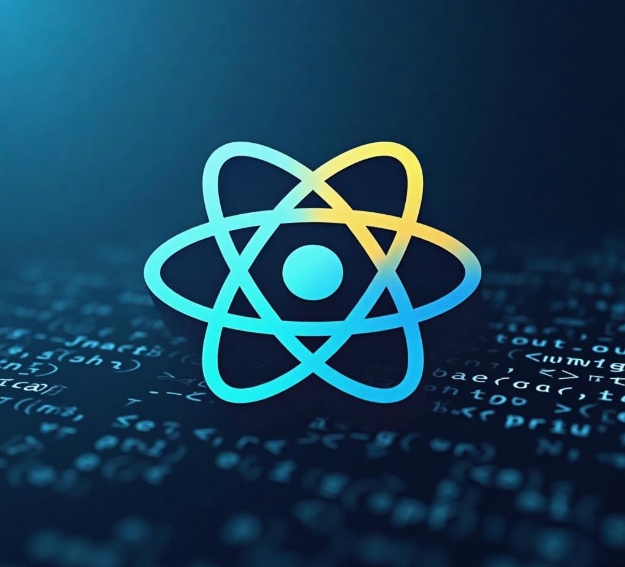Technology Stack Selection for APP Development: React Native vs. Flutter Comparison
- latest articles
- 1.DApp Development & Customization: Merging Diverse Market Needs with User Experience 2.Analysis of the Core Technical System in DApp Project Development 3.How to achieve cross-chain interoperability in Web3 projects? 4.How does the tokenization of points reconstruct the e-commerce ecosystem? 5.How to Set and Track Data Metrics for a Points Mall? 6.What is DApp Development? Core Concepts and Technical Analysis 7.Inventory of commonly used Web3 development tools and usage tips 8.Development of a Distribution System Integrated with Social E-commerce 9.Six Key Steps for Businesses to Build a Points Mall System 10.What is DApp Development? A Comprehensive Guide from Concept to Implementation
- Popular Articles
- 1.Future Trends and Technology Predictions for APP Development in 2025 2.Analysis of the DeFi Ecosystem: How Developers Can Participate in Decentralized Finance Innovation 3.From Zero to One: How PI Mall Revolutionizes the Traditional E-commerce Model 4.DAPP Development | Best Practices for Professional Customization and Rapid Launch 5.Recommended by the Web3 developer community: the most noteworthy forums and resources 6.From Cloud Computing to Computing Power Leasing: Building a Flexible and Scalable Computing Resource Platform 7.How to Develop a Successful Douyin Mini Program: Technical Architecture and Best Practices 8.Shared Bike System APP: The Convenient Choice in the Era of Smart Travel 9.How to Create a Successful Dating App: From Needs Analysis to User Experience Design 10.From Design to Development: The Complete Process of Bringing an APP Idea to Life
With the rapid development of mobile internet, more and more businesses and developers are choosing to develop cross-platform mobile applications. Traditional mobile app development typically requires separate development and maintenance of independent codebases for different operating systems (iOS and Android), but the emergence of cross-platform development frameworks has solved this problem. Two very popular cross-platform development frameworks are React Native and Flutter, each with its own technology stack, development philosophy, community support, and use cases. This article will provide a detailed comparison of these two frameworks to help developers make more informed decisions when choosing the right technology stack.
I. Overview of React Native
React Native is an open-source framework launched by Facebook in 2015, allowing developers to use JavaScript and React concepts to develop cross-platform mobile applications. The core idea of React Native is to use JavaScript to write the application's business logic and interact with native code through a Bridge, thereby achieving a user experience similar to native applications.
Technology Stack:
Language: JavaScript (or TypeScript)
UI Framework: React (for building user interfaces)
Cross-Platform Principle: Interacts with native components via Bridge
Community Support: Large React ecosystem with abundant third-party libraries and components
One of React Native's biggest advantages is its compatibility with the React framework, allowing developers to easily apply their React web development experience to mobile development. Additionally, React Native has a large developer community, with many libraries and tools optimized for it, making the development process smoother.
II. Overview of Flutter
Flutter is an open-source UI framework launched by Google in 2017, designed to help developers create cross-platform applications using the Dart language. Unlike React Native, Flutter does not rely on native components but directly draws UI components through its own high-performance rendering engine, Skia. Flutter's strengths lie in its high performance and precise control over the UI, making it easier for developers to create beautiful, customized user interfaces.
Technology Stack:
Language: Dart
UI Framework: Flutter's own component library
Cross-Platform Principle: Directly uses Skia engine to render UI, independent of native controls
Community Support: Flutter ecosystem is growing, with active support from Google and the community
Flutter's standout feature is its excellent performance and cross-platform development experience. Flutter applications essentially control rendering directly through its own engine, avoiding the intermediate layer with native controls, thus providing a near-native experience across multiple platforms.
III. Comparison Between React Native and Flutter
To better understand the strengths and weaknesses of these two frameworks, the following will provide a detailed comparison of React Native and Flutter across multiple dimensions.
1. Development Language and Learning Curve
React Native: React Native uses JavaScript (or TypeScript). JavaScript is one of the most popular programming languages, and many developers are already familiar with it, so the learning curve is relatively gentle. For front-end developers, learning React Native is easier because its syntax and concepts are similar to React.
Flutter: Flutter uses the Dart language. Dart is a relatively new language and not as widespread as JavaScript. This means developers need to spend some time learning Dart. However, Dart's syntax is similar to modern programming languages and is not difficult to learn. If you have experience with object-oriented languages like Java or C#, the learning curve for Dart will be even gentler.
Summary: React Native has a lower learning curve, especially for developers already familiar with JavaScript and React. While Flutter requires learning Dart, its syntax is concise and not complicated for most developers.
2. Performance Comparison
React Native: React Native's performance is generally slightly inferior to pure Java/Kotlin (Android) or Swift (iOS) development. Although React Native interacts with native code through a bridge, this cross-communication incurs some performance overhead, especially in scenarios with frequent updates, which may cause stuttering or delays.
Flutter: Flutter controls UI rendering directly through the Skia rendering engine, avoiding the communication bottleneck between JavaScript and native code. Therefore, Flutter performs better than React Native in terms of performance, especially in animations and complex UI rendering, providing a smoother experience.
Summary: In terms of performance, Flutter generally outperforms React Native, especially in applications requiring complex animations or high frame rate rendering, where Flutter has the advantage.
3. UI Components and Customization
React Native: React Native provides some basic native components (such as buttons, lists, etc.) and allows developers to extend UI components through third-party libraries. However, React Native's UI components cannot directly control rendering details because they rely on native controls. In terms of customization, React Native may require more native code support, especially for certain platform-specific UI features.
Flutter: Flutter comes with a large number of built-in UI components, and the rendering of these components is entirely controlled by the Flutter engine. Therefore, developers can easily perform deep customization and efficient UI development. Flutter excels in visual effects and UI customization, especially when you need to create unique UIs, as it offers more freedom.
Summary: In terms of UI components and customization, Flutter has a more apparent advantage. Flutter provides finer control over the UI, making it particularly suitable for applications requiring high customization and smooth animations.
4. Hot Reload and Development Experience
React Native: React Native supports Hot Reloading, allowing developers to see the effects of code changes immediately after modification. Hot reloading is an important feature of React Native that can significantly improve development efficiency.
Flutter: Flutter also provides a similar hot reload feature, allowing developers to instantly see changes in the UI and logic. Flutter's hot reload is very smooth with almost no delay, greatly enhancing efficiency during development.
Summary: Both React Native and Flutter excel in hot reload functionality, significantly improving development efficiency, with little difference between the two.
5. Community Support and Ecosystem
React Native: Since its launch, React Native has built a large community and ecosystem. Developers can easily find many open-source libraries, tools, and plugins, with ready-made solutions for almost all common functionalities (such as image processing, video playback, network requests, etc.). Additionally, React Native's compatibility with React allows developers to leverage web development resources more easily.
Flutter: Although Flutter's community started later, it has developed rapidly in recent years. Google and the Flutter team provide extensive official documentation and tool support, and the community actively contributes open-source libraries and plugins. Although Flutter's ecosystem is not as large as React Native's, its growth momentum is very strong.
Summary: React Native's ecosystem is more mature and its community is larger, making it easier for developers to find solutions. While Flutter's ecosystem is newer, it is continuously growing, and with strong support from Google, Flutter is gradually becoming an increasingly popular choice.
IV. Suitable Scenarios and Selection Recommendations
React Native Suitable Scenarios:
If your team is already familiar with JavaScript and React, React Native is undoubtedly a good choice.
For relatively simple applications or projects requiring rapid development, React Native offers high development efficiency.
If you need rapid iteration, React Native's development experience and community support will significantly enhance your productivity.
Flutter Suitable Scenarios:
If you need high-performance UI and fine-tuned animation effects, Flutter is an excellent choice.
Flutter is very suitable for projects requiring highly customized UIs and high cross-platform consistency.
For developers pursuing smooth performance and high attention to detail, Flutter provides a better development experience.
V. Conclusion
As the most popular cross-platform development frameworks today, React Native and Flutter each have their unique strengths and weaknesses. The choice of which framework to use depends on your project requirements, your team's technology stack, and development goals. In general, if you are already familiar with JavaScript and React, React Native is a relatively easy and efficient choice. If your application has high demands for performance and UI, Flutter is undoubtedly a more powerful tool. Ultimately, developers need to weigh the specifics and make the most appropriate technology stack choice.
-

How to Use App Development to Boost Conversion Rates on E-commerce Platforms
With the widespread adoption of smartphones and the rapid development of mobile ···
-

How APP Development Facilitates Digital Transformation and Innovation
With the rapid advancement of information technology, digital transformation has···
-

App Store Optimization and SEO Strategies in App Development
In today's rapidly evolving mobile internet landscape, apps have become essentia···

 Blockchain
Blockchain












